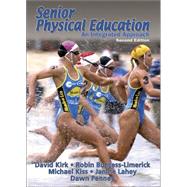
| Preface | |
| Acknowledgements | |
| Introduction | |
| Learning Physical Activity | |
| Theories of Learning Physical Activity | |
| Traditional Approaches to Motor Learning and Skill Acquisition | |
| Information-Processing Approach | |
| Constructivist Approaches to Learning | |
| The Teacher or Coach As a Facilitator of Learning | |
| Psychological Factors in Learning Physical Skills | |
| Defining a Good Performance | |
| Motivation and Performance | |
| Goal Setting: A Strategy for Increasing Motivation | |
| Anxiety, Arousal and Performance | |
| Confidence | |
| Concentration | |
| Team Cohesion | |
| Describing Motion When Learning Physical Skills | |
| Kinematics: Describing Motion | |
| Linear Motion | |
| Angular Motion | |
| Projectile Motion | |
| Centre of Mass | |
| Understanding Forces and Torques in Learning Physical Skills | |
| Force Has Magnitude and Direction | |
| Torque: The Turning Effect of Force | |
| Resultant Forces and Torques | |
| Impulse and Momentum | |
| Work, Power and Energy | |
| Impact Mechanics | |
| Fluid Mechanics | |
| Physiological Dimensions of Physical Activity | |
| Energy for Physical Activity | |
| Energy Systems and Movement | |
| Fuel for Physical Activity | |
| Nutrition for Physical Activity | |
| Physiological Factors Affecting Physical Activity | |
| Metabolic Capacity | |
| Cardiorespiratory Capacity | |
| Neuromusculoskeletal Capacity | |
| Physiological Capacity and Age | |
| Physiological Capacity and Sex | |
| Improving Physiological Capacity for Physical Activity | |
| Principles of Training | |
| Training Program Design | |
| Training for Health | |
| Sociocultural Dimensions of Physical Activity | |
| Equity in Physical Activity, Physical Education and Sport | |
| Defining Equity | |
| Targeting Groups and Providing for Individuals | |
| Individual Differences: A Problem or an Asset? | |
| Commitment to Equity | |
| Promoting Equity: A Framework for Understanding and Action | |
| Body, Culture and Physical Activity | |
| Social Construction of Bodies | |
| Naturalistic and Constructionist Views of the Body | |
| Changing Conceptions of the Body and Physical Activity | |
| Body Image and Physical Activity | |
| Media Representations of the Body | |
| Social Regulation of the Body Through Physical Activity | |
| Scientific Regulation of the Body | |
| Lifestyle, Leisure and Physical Recreation | |
| Changing Conceptions of Lifestyle, Leisure and Recreation | |
| Commodification of Lifestyle | |
| Patterns of Participation in Recreational Physical Activity | |
| Social Factors Affecting Participation in Physical Recreation | |
| Patterns of Participation in Sport | |
| Spectatorship in Sport | |
| Money, Media and Power in Sport, Recreation and Exercise | |
| Changes to Sport, Recreation and Exercise | |
| Commodification of Sport | |
| Commodification of Exercise | |
| Technology and Sport | |
| Physical Activity, Gender and Power | |
| Politics and Power in Sport | |
| Globalisation of Sport | |
| Test Yourself Answers | |
| Bibliography and Suggested Readings | |
| Index | |
| About the Authors | |
| Table of Contents provided by Publisher. All Rights Reserved. |
The New copy of this book will include any supplemental materials advertised. Please check the title of the book to determine if it should include any access cards, study guides, lab manuals, CDs, etc.
The Used, Rental and eBook copies of this book are not guaranteed to include any supplemental materials. Typically, only the book itself is included. This is true even if the title states it includes any access cards, study guides, lab manuals, CDs, etc.